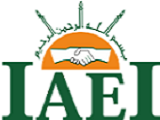Factors Influencing Customer’s Acceptance of Islamic Banking Products and Services
Abstract
The emergence of Islamic banking system has had a huge impact on the financial industry. This research attempts to identify the influential factors that are associated with Islamic banking adoption between the Muslim and non-Muslim populations in Sarawak, Malaysia. With the “adoption of Islamic banking” as the dependent variable, this study studies its relationship with seven independent variables. They are, four attributes of innovation, namely; 1) relative advantage, 2) compatibility, 3) observability and 4) complexity, and three additional variables namely; 5) perceived risk, 6) perceived trust and 7) customer innovativeness. A convenient sampling method is used whereby a questionnaire is administered to 436 respondents in Sarawak, Malaysia. Using the logistic regression method, three factors; 1) compatibility, 2) relative advantage/observability and 3) complexity are found to have significant relationship with customers’ adoption of Islamic banking products and services.
Keywords
Full Text:
PDFReferences
Ahmad, N. and Haron, S. (2002). Perceptions of Malaysian Corporate Customers Towards Islamic Banking Products and Services. International Journal of Islamic Financial Services, 3(1): 13-29.
Abdul-Qawi, O. and Owen, L. (2001). Adopting and Measuring Customer Service Quality (SQ) in Islamic banks: A Case Study in Kuwait Finance House. International Journal of Islamic Financial Services, Vol.3, No.1: 1-26.
Al-Jabri, I.M. and Sohail, M.S. (2012). Mobile Banking Adoption: Application of Diffusion of Innovation Theory. Journal of Electronic Commerce Research, Vol. 13(4): 379-391.
Al-Qaradhawi, Y. (2009). Ekonomi Islam Nilai dan Akhlak. Kuala Lumpur: YaPEIM.
Amin, H., Abdul Rahman, A.R. and Abdul Razak, D. (2013). An Integrative Approach for Understanding Islamic Home Financing Adoption in Malaysia. International Journal of Bank Marketing, 31(7): 544-573.
Aziz, Z.A. (2007). Governor of Central Bank of Malaysia: Keynote address at INCEIF, Inaugural Intellectual Discourse, 23 February, Kuala Lumpur.
Brown, I., Cajee, Z., Davies, D. and Stroebel, S. (2003). Cell Phone Banking: Predictors of Adoption in South Africa: An Exploratory Study. International Journal of Information Management, Vol. 23, No. 5: 381-94.
Cheung, W., Chang, M.K. and Lai, V.S. (2000). Prediction of internet and World Wide Web usage at work: a test of an extended Triandis model. Decision Support Systems, Vol. 30, No. 1: 83-100.
Doraisamy, B., Shanmugam, A. and Raman, R. (2011). A study on consumers’ preferences of Islamic banking products and services in Sungai Petani. Academic Research International, 1 (3): 201-210.
Flynn, L.R. and Goldsmith, R.E. (1993). A Validation of The Goldsmith and Hofacker Innovativeness Scale. Educational and Psychological Measurement, Vol. 53: 1105-1116.
Gait, A.H. and Worthington, A.C. (2007). A Primer on Islamic Finance: Definitions, Sources, Principles and Methods. Working Paper Series No. 07/05. University of Wollongong, School of Accounting and Finance.
Gerard, P. and Cunningham, J.B. (2003). The Diffusion of Internet Banking Among Singapore. International Journal of Bank Market, 21: 16-28.
Hair, J., Anderson, R.E., Tatham, R.L., and Black, W.C. (2010). Multivariate data analysis. 7th ed. New Jersey: Prentice-Hall Inc.
Haron, S. and Nursofiza, W.A. (2005). Marketing strategy of Islamic banks: a lesson from Malaysia. International Seminar on Enhancing Competitive Advantage on Islamic Financial Institutions.
Hoffmann, S. and Soyez, K. (2010). A Cognitive Model to Predict Domain-Specific Consumer Innovativeness. Journal of Business Research, 63(7): 778-785.
Hussein, R., Mohamed, N., Ahlan, A. R. and Mahmud, M. (2011). E-government application: an integrated model on G2C adoption of online tax. Transforming Government: People, Process and Policy, 5(3): 225-248.
Kantsperger, R., and Kunz, W. H. (2010). Consumer trust in service companies: a multiple mediating analysis. Managing Service Quality, 20(1): 4-25.
Kolodinsky, J. M., Hogarth, J. M., and Hilgert, M. A. (2004). The adoption of electronic banking technologies by US consumers. International Journal of Bank Marketing, 22(4/5): 238- 259.
Lassar, W. M., Manolis, C., and Lassar, S. S. (2005). The Relationship Between Consumer Innovativeness, Personal Characteristics, and Online Banking Adoption. International Journal of Bank Marketing, 23(2): 176-199.
Manning, K. C., Bearden, W. O. and Madden, T. J. (1995).Consumer Innovativeness and The Adoption Process. Journal of Consumer Psychology, 4(4): 329-345.
Mayer, R. C., Davis, J., and Schoorman, F. D. (1995). An Integrative Model of Organizational Trust. Academy of Management Review, 20(3): 709-734.
Menard. (2002). Applied logistic regression analysis, 2nd Edition. Sage Publication Inc, UK.
Mian, T.S. and Rizwan, M. (2013). Determinants of Customer Intention to Use Mobile Banking: an Empirical Research Based on Extended Technology Acceptance Model. Journal of Basic and Applied Scientific Research, Vol.3 (11): 201-211.
Midgley, F.D. and Dowling, G.R. (1978). Innovativeness: The Concept and Its Measurement. Journal of Consumer Research, 4(4): 229-325.
Moore, G.C. and Benbasat, I. (1991). Development of an Instrument to Measure The Perceptions of Adopting an Information Technology Innovation. Information Systems Research, Vol. 2(3): 192-222.
Muawanah, U. (2010). Praktik Corporate Governance and Spiritual Islami di Perbankan Islamic: Pendekatan Mixed Method. (Unpublished Dissertation). PDIA PPSFEUB.
Olatokun, W.M. and Igbinedion, L.J. (2009). The adoption of automatic teller machines in Nigeria: An application of the Theory of Diffusion of Innovation. Issues in Informing Science and Information Technology, Vol. 6: 373-393.
Ram, S. and Sheth, J.N. (1989). Consumer resistance to innovations: the marketing problem and its solutions. Journal of Consumer Marketing, Vol. 6, No. 2: 5-14.
Raman, R. (2010). A study of consumers’ adoption towards Islamic banking products and services in the state of Kedah Darul Aman. (Unpublished Thesis). Universiti Utara Malaysia.
Rambocas, M. and Arjoon, S. (2012). Using Diffusion of Innovation Theory to Model Customer Loyalty for Internet Banking: A TT Millennial perspective. International Journal of Business and Commerce, Vol.1, No.8: 1-14.
Rogers, E.M. (1971). Communication of Innovations: A Cross-Cultural Approach 2nd Edition. New York: Free Press.
Rogers, E.M. and Shoemaker, F. (1971). Communications in Innovation. New York: Free Press.
Rogers, E.M. (2003). Diffusion of Innovations (5th Edition). New York: Free Press.
Rugimbana, R. and Iversen, P. (1994). Perceived attributes of ATMs and their marketing implications. International Journal of Bank Marketing, Vol.12, No.2: 30-35.
Sathye, M. (1999). Adoption of internet banking by Australian consumers: An empirical investigation. International Journal of Bank Marketing, Vol. 17(7): 324-334.
Tabachnick, B.G. and Fidell, L.S. (2001). Using Multivariate Statistics (4th Edition). New York: HarperCollins.
Taylor, J.W. (1974). The role of risk in consumer behavior. Journal of Marketing, Vol. 38(2): 54-60.
Thambiah, S., Ramanathan, S. and Mazumder, M.N.H. (2012). The determinants of Islamic retail banking adoption in Malaysia. International Business and Economic Research Journal, Vol.11, No.4: 437-442.
Yahya, M.H., Junaina M. and Abdul Razak A. H. (2012). A comparative study on the level of efficiency between Islamic and conventional banking systems in Malaysia.International Journal of Islamic and Middle Eastern Finance and Management, Vol. 5 Iss 1: 48 – 62.
Yahya, M.H., Junaina M., Amalina A. and Nassir, A.M. (2013). Chinks in the capitalism system- the pertinence of Islamic finance. Journal of International Business and Cultural Studies, Vol.7: 1-16.
Yusof, M.Y.R. (1999). Islamic Banking: Adoption of a Service Innovation. (Unpublished Thesis). Singapore: Nanyang Technological University (NTU).
DOI: http://dx.doi.org/10.24042/febi.v2i1.681
Refbacks
- There are currently no refbacks.
Copyright (c) 2017 IKONOMIKA

This work is licensed under a Creative Commons Attribution-NonCommercial-ShareAlike 4.0 International License.
Ikonomika : Jurnal Ekonomi dan Bisnis Islam is a Journal of Islamic Economics and Business, Published by the Faculty of Islamic Economics and Business at UIN Raden Intan Lampung Indonesia. This work is licensed under a Creative Commons Attribution-ShareAlike 4.0 International License.






11.png)


